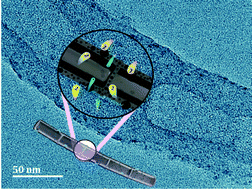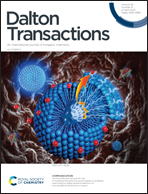Construction of the NaTi2(PO4)3/C electrode with a one-dimensional porous hybrid structure as an advanced anode for sodium-ion batteries†
Abstract
The inferior electronic conductivity of NASICON materials leads to poor cyclability and rate capability, which severely inhibits their extensive development. Therefore, we have developed a one-dimensional (1D) hybrid electrode material that combines small NaTi2(PO4)3 nanoparticles (5–50 nm) with a porous carbon matrix using a controllable sol–gel strategy. This unique design enables the electrode to possess good structural stability, superior charge transfer kinetics, and low polarization. The intimate combination between the nanoparticles and the porous carbon matrix can effectively facilitate Na+/e− transfer and accommodate volume variation during cycling. The construction of the new structure presented in this work will extend the applications of the NaTi2(PO4)3 system. Furthermore, the formed hybrid structure has potential to be a universal model for various electrode materials.



 Please wait while we load your content...
Please wait while we load your content...